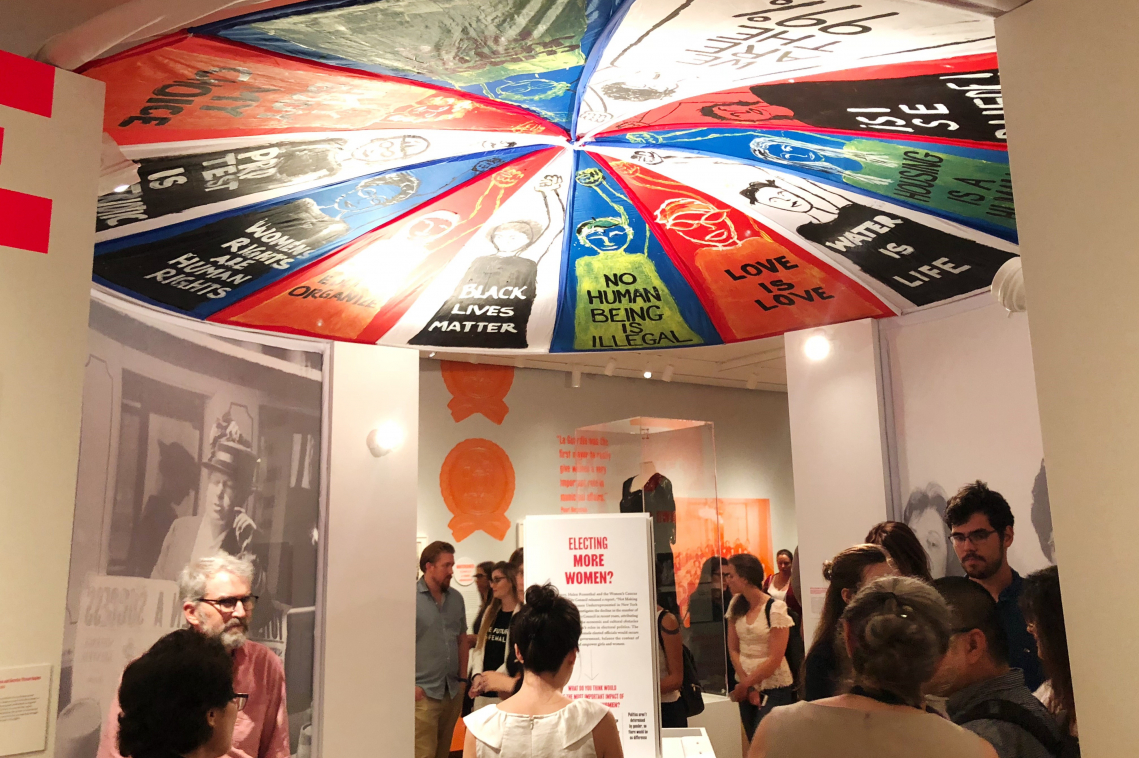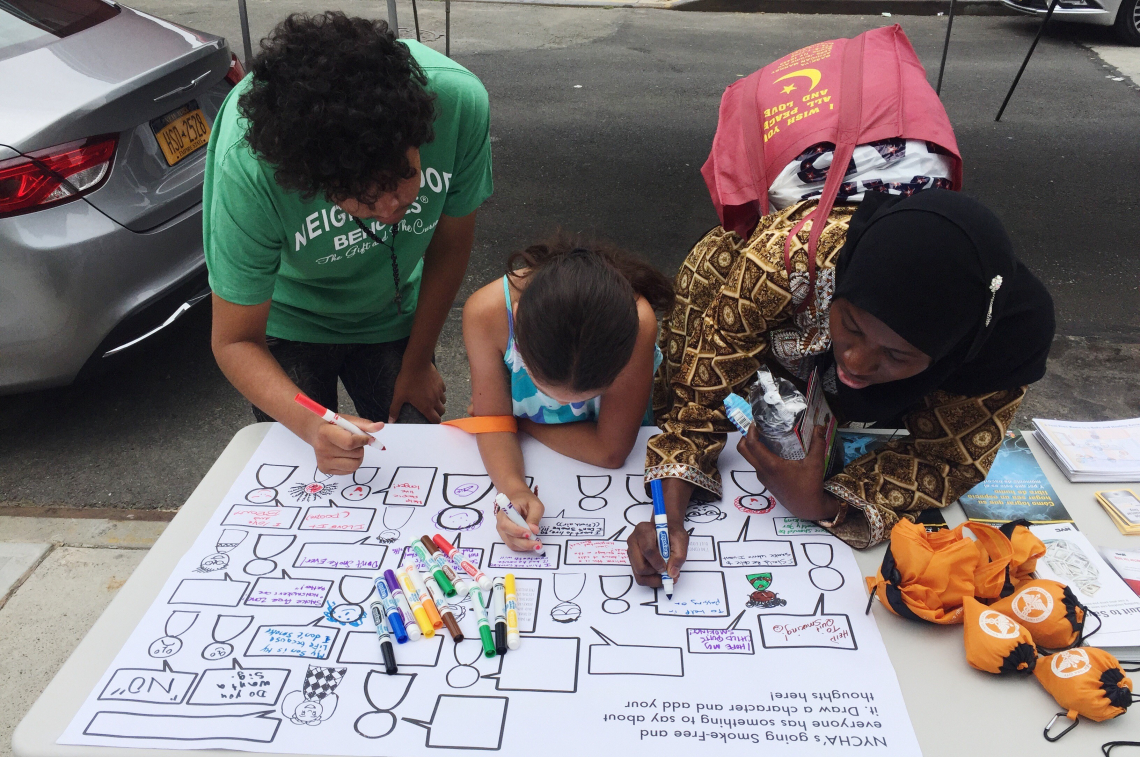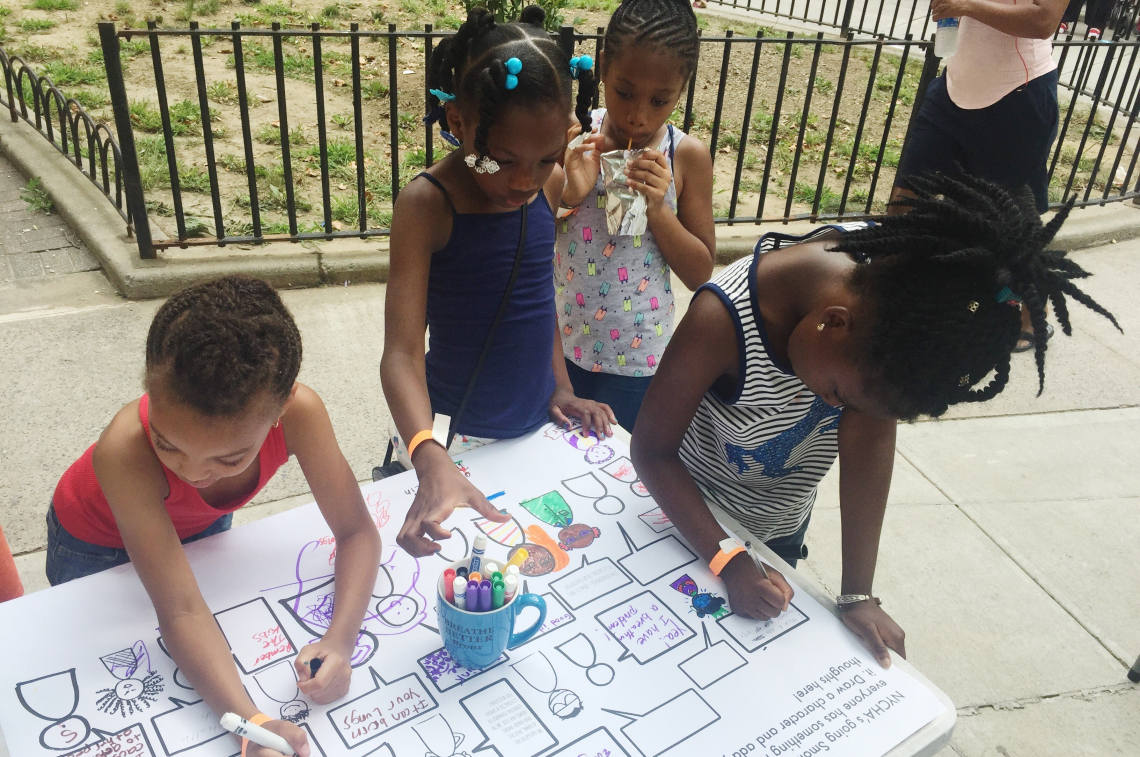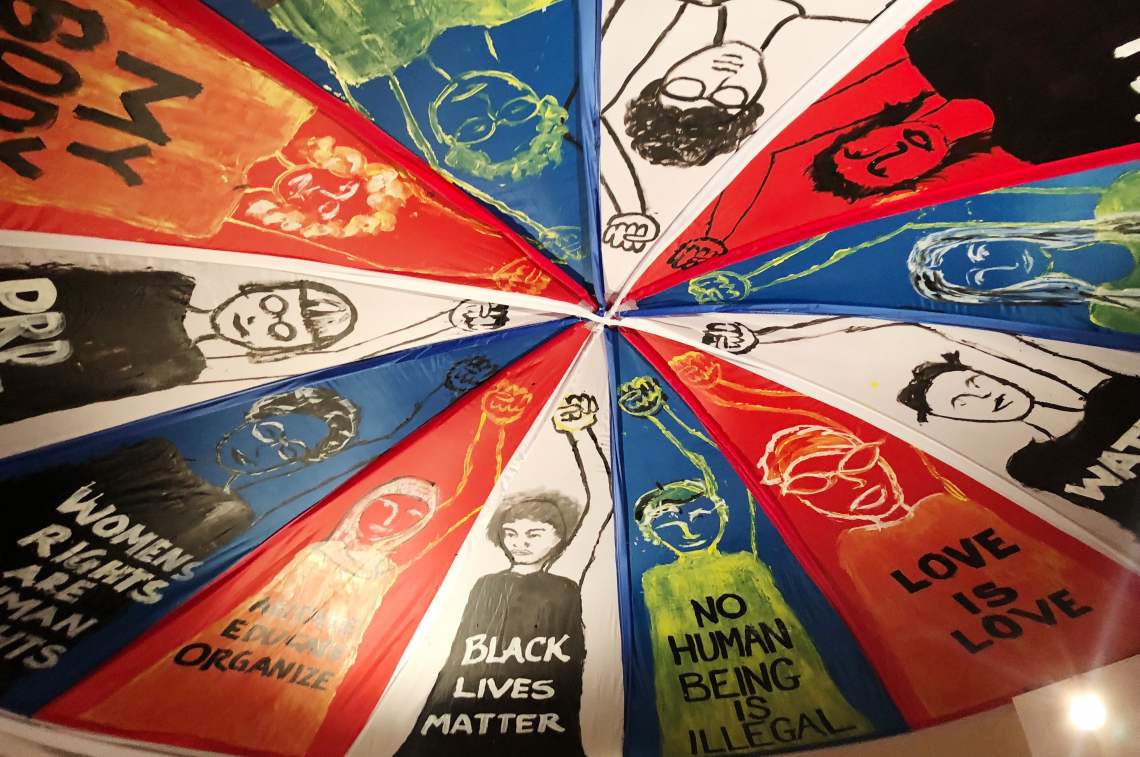



Elizabeth Hamby is an artist and the Acting Director of Health Equity in All Policies working in The Center for Health Equity at New York City Department of Health and Mental Hygiene. We caught up with her to talk Dungeons and Dragons, smoke free public housing, and the art of community.
The health and housing impacts of structural racism
My work with the Department of Health has expanded to include food access, partnerships to support comprehensive neighborhood planning, and collaboration with the New York City Housing Authority (NYCHA) to address health inequities faced by public housing residents. One of the things that's been really exciting for me about that kind of expansion is the opportunity to do some new and different projects. One of those is a Dungeons and Dragons style adventure game that I put together with colleagues from the Health Department. It was the first time I got to do an art project with scientists. I’m very lucky to work with talented, brilliant and wonderful epidemiologists like Dr. Zinzi Bailey who in particular has done some incredible work on the health impacts of structural racism. Along with Dr. Stephanie Farquhar, Hannah Seoh, Corinna Wainwright, and Marlon Williams, we took this heavy body of complex research and thought “how can we make this accessible for everyday people?” Our game is called, “What Creates Health: Race, Place, and Public Space.”
Players move through a series of stories with all kinds of choices to make. The story we travel through takes place in 3 different time periods. The first is in the 1930s where players deal with the challenges of redlining, with the public health problem of TB where poor ventilation and badly maintained properties affected communities of color disproportionately. Then the game moves into the 70s and the Issues are public sector disinvestment- and an explosion of chronic diseases like diabetes. The game explores how communities of color were again disproportionately impacted by both. It ends in 2010 in the stop and frisk era. People of color have been more impacted by this policy, and there has been a direct impact on communities by these methods of policing. Mental health issues, substance abuse, and general wellness are all affected.
So far, we've used it to facilitate conversations with urban planning professionals, but we’ve got big dreams for where the work can go. The Center for Health Equity is committed to addressing social and racial justice as part of public health practice so this has been a great facilitator for some of those dialogues.
Smoke free public housing community engagement
My portfolio of work includes our partnership with NYCHA. We worked on a huge project to help NYCHA to go smoke free (the requirement came in on July 30 this year) and we worked on a robust community engagement process to pull residents into a conversation about what it will look like, what their hopes and concerns for the policy are and to encourage them to think about the ways they want to get involved. The community engagement activities we designed are also a really exciting way of how art based practice has made its way directly into this kind of city agency work. One activity last summer brought a blank banner with silhouettes of people with speech bubbles to NYCHA family days, summer block parties that happen all over the city. We asked people to draw characters on the banner and write in comments with hopes, concerns or wishes about smoke free public housing. We digitized all those little characters and fed them into the broader communications strategy and materials we developed to support smoke free. Our engagement materials were literally be made by NYCHA residents.
Successfully working with communities
Practice radical honesty with yourself first. Be up front about what you can do, what you can’t do, and what you want to get out of a collaboration. That piece of self-reflection often gets lost in many kinds of collaboration. We forget what we have to offer and the intricacies of what can happen in the magic of that exchange. Next - make sure to acknowledge and celebrate the humanity of your collaborators in all of their strengths and weaknesses and messiness. When we approach someone as a potential collaborator, making sure we allow ourselves to be seen and that we are seeing them, is important in building the trust to work together authentically, making sure that everyone is clear about what they can expect from the work you'll be doing together.
A lot of time we think about artists who come in from the outside and collaborate with non-arts partners like governments, corporations, social movements, or non-profits but artists are already here and we’re just like you! There are important ways that there are artists at work in all of these spaces all the time. What are the opportunities are to illuminate that and liberate the people who are artists but spend their days in cubicles rather than studios. And also, liberate the people who have that artistic training, like me, who don't actually want to spend their days by themselves, but want to be in the world and of the world, and working in that way.
At a time when so much is at stake for so many people, we are in a particularly dangerous moment, we are all morally required to use the gifts and the tools that we have at our disposal to protect those that are vulnerable. It can give you access to incredible moments of hope, these beautiful glimpses of how things could be.
See Elizabeth’s work here:
Elizabethhamby.com
Project for Public Spaces
elizabethhamby.tumblr.com





